#Qianlong Emperor
Text
Okay, please reply to this post if you want me to put you on the tag list for that (eventual) Qianlong Transmigration fic
EDIT: When I say reply, I mean comment or reblog. Likes are only gonna get lost.
34 notes
·
View notes
Text
UK kitchen vase turns out to be $1.8 million Qing-dynasty treasure

A royal blue 18th-century Chinese vase decorated with gold and silver, which sat in a U.K. kitchen for several years, just sold at auction for about $1.8 million after historians realized it had once belonged to an emperor.
However, the vase's unclear history — combined with the looting of Chinese palaces in the 19th century — raises ethical concerns, according to an expert who was not involved with the sale.
The vase is large, about 2 feet (0.6 meters) tall, and it is marked with a symbol associated with the Qianlong emperor — the sixth emperor of the Qing dynasty, the country's last imperial dynasty — who ruled China from 1735 to 1795, according to a statement released by the auction company Dreweatts, which sold the vase on May 18. Read more.
438 notes
·
View notes
Photo
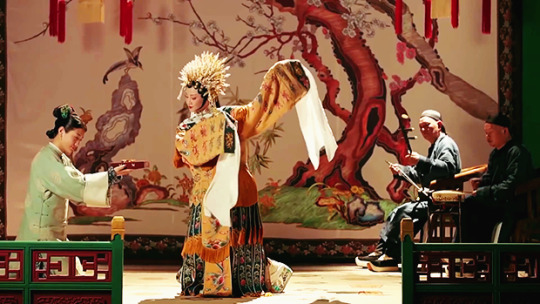
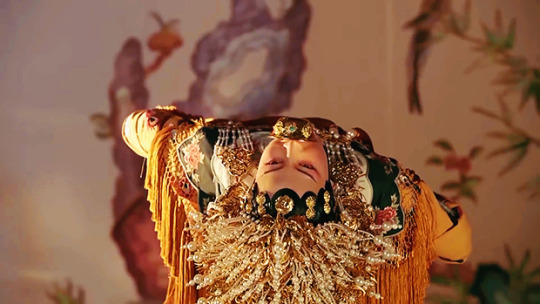



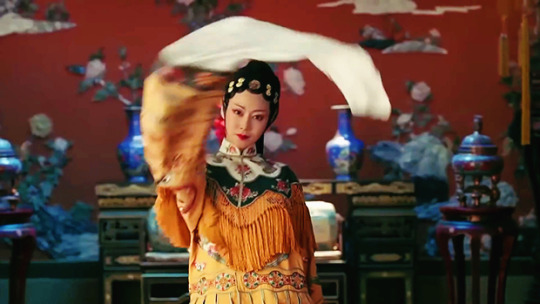


#gao ningxin#consort gao#the story of yanxi palace#cdrama#cdramaedit#mine#noble consort gao#story of yanxi palace#yanxi palace#sometimes i simply enjoy an evil lady#aisin gioro hongli#qianlong emperor
100 notes
·
View notes
Photo


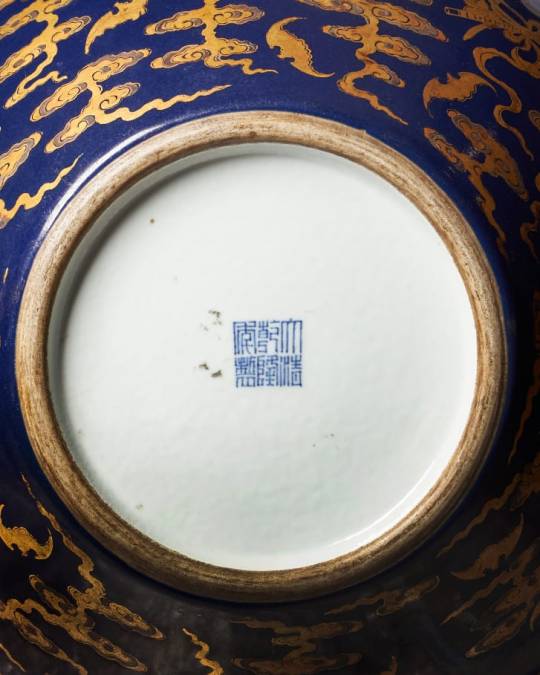
Rare 18th-Century Chinese Vase Kept in Kitchen Sells for $1.8 Million
A rare Chinese vase dating from the 18th century has sold for nearly £1.5 million ($1.8 million) at auction.
The gilded blue artifact was initially valued at £150,000 ($186,000), according to Dreweatts, the English auction house that handled the sale.
The seller inherited the vase from his father, a surgeon, who bought it in the 1980s for a few hundred pounds, Dreweatts said in a statement. The seller was unaware of its value, and so kept it in the kitchen, where it was spotted by an expert.
Measuring two feet in height, the porcelain vase is embellished with a six-character seal mark characteristic of the Qianlong era (1736-1795) along its base, the auction house said.
It was made for the court of the Qianlong Emperor -- the sixth emperor of the Qing dynasty -- and would have been crafted using innovative heating techniques to achieve its blue, gold and silver coloring, Dreweatts added.
The vase would need to have been fired at a temperature of nearly 2,200 degrees Fahrenheit (about 1,200 celsius) to achieve the cobalt blue shade, while the interior turquoise tint and the exterior gold and silver colors would have been created in a kiln suited for enamels, the auction house said.
The Chinese name for this kind of vase is "tianqiuping," which translates to "heavenly globe vase" and describes its spherical shape. Dreweatts said there have not been any other tianqiuping vases documented with the same designs in gold and silver, making it extremely rare.
Mark Newstead, a specialist consultant for Asian ceramics and artworks at Dreweatts, said in the statement that bidding interest came from China, Hong Kong, the US and the UK.
"The result shows the high demand for the finest porcelain produced in the world. A fabulous result and we are privileged to have sold this at Dreweatts," he added.
A number of other rare artifacts recovered from obscurity have earned high sale prices recently.
In March last year, a 15th-century blue-and-white Chinese bowl bought at a yard sale for $35 sold for $721,800 at auction.
A few months later, a 16th-century Italian dish discovered in a drawer fetched more than $1.7 million at auction -- 10 times its original estimate.
By Sana Noor Haq and Amarachi Orie.
#Rare 18th-Century Chinese Vase Kept in Kitchen Sells for $1.8 Million#qianlong emperor#qianlong era#ancient artifacts#history#history news#ancient history#ancient culture#ancient civilizations
26 notes
·
View notes
Photo

“The downfall of the Step Empress Nara is one of the biggest royal mysteries and it would be so interesting if there is official record. The most common theory is that she had a massive fight with Emperor Qianlong and cut her hair in the process, a major taboo in Manchu culture. Whatever the fight was about, nobody knew but that must be something important because the emperor demoted her and even in her death, she was not given the funeral treatment worthy of an empress. The emperor literally hated her guts. Too bad that we will never know why.” - Submitted by Anonymous
16 notes
·
View notes
Text
Wallace Huo: What I've Seen Him In

Ruyi's Royal Love in the Palace - Hongli/ Emperor Qianlong
0 notes
Photo




Cdrama: Ruyi’s Royal Love in the Palace (2018)
Hailan "When I put on makeup, I transform" | Ruyi's Royal Love in the Palace 如懿传 (Eng Sub)
Watch this video on Youtube: https://www.youtube.com/shorts/t6-W_O-iMFs
#Ruyi's Royal Love in the Palace#如懿传#Ru Yi Zhuan#Inner Palace#Legend of Ruyi#2018#Tencent#QQlive#cdrama#chinese drama#youtube#shorts#short video#Zhou Xun#Ulanara Ruyi#Wallace Huo#Huo Jian Hua#Emperor Qianlong
92 notes
·
View notes
Note
Who would you say “great man theory” of history is most applicable too, as in, they’re struck by lightning as a kid, whose death changes the world the most? Tempted to say Muhammad, hard for me to imagine Islam just emerging organically like that in his absence, or if so massively different. I know causal inference is super hard for history (No counterfactuals!) this is just an educated guess for fun.
idk, Siddhartha Gautama? Maybe Galen?
theoretically the impact would be bigger the further back the person lived, and I don't have a super strong basis in ancient history.
If we're going for modern history, then a number of candidates come up. Napoleon, for one. Possibly Nurhaci (what is now China is a very interesting counterfactual to examine). Toyotomi Hideyoshi maybe. I think you'd be looking at a person in the center of a chain of events that set off other events globally.
#most of my history is from the past 3-4 centuries with an emphasis on the past two#earlier than that and it tends to have been taught with an emphasis on democraphics and trends#not individual people#seriously it is really hard for me to come up with great men for great man history.#because that's just not how i've studied or been taught it.#i considered the qianlong emperor but it's kinda hard to say what would have happened sans him#it's a lot easier to point towards people who start wars or religions
1 note
·
View note
Text
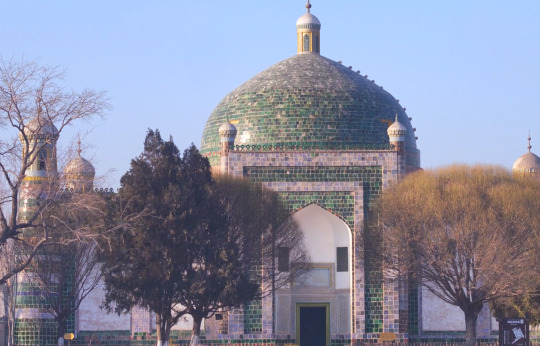
0 notes
Text
Amazing fanart by Joanacchi! Posted here on tumblr with their blessing. Each one is based on a style that reflects a particular ancient culture's art history. (See below for descriptions provided by the artist!)
Store (buy these prints!) Twitter Instagram

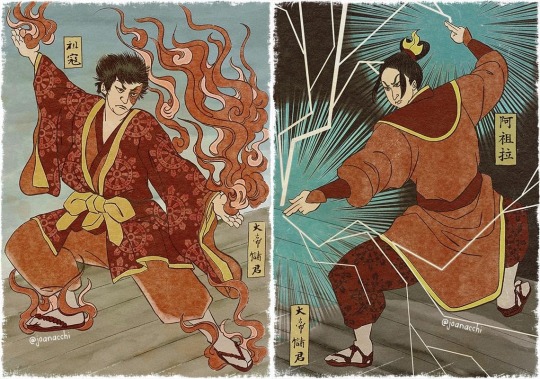
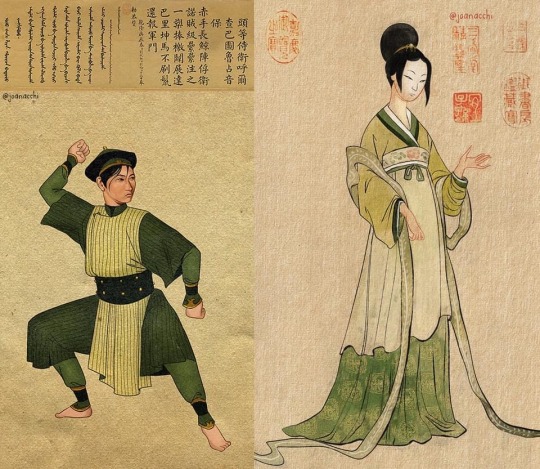
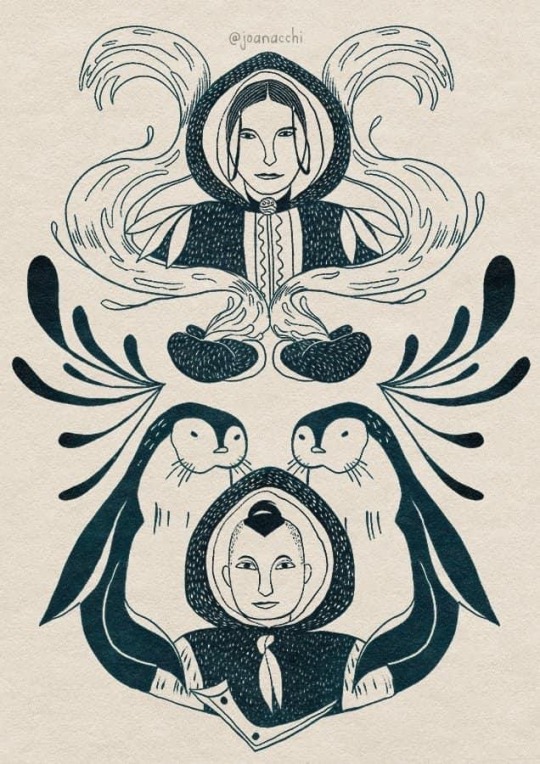
Aang: Tibetan Thangka
"Thangkas are traditional Tibetan tapestries that have been used for religious and educational purposes since ancient times! The techniques applied can vary greatly, but they usually use silk or cotton fabrics to paint or embroider on. What you can depict in a Thangka is really versatile, and I wanted to represent things that make up Aang as a character."
Zuko and Azula: Japanese Ukiyo-e
"Ukiyo-e is a style that has been around Japan between the 17th and 19th century, and focused mainly in representing daily life, theater(kabuki), natural landscapes, and sometimes historical characters or legends!
Ukiyo-e was developed to be more of a fast and commercial type of art, so many drawings we see are actually woodblock prints, so the artist could do many copies of the same art!
I based my Zuko and Azula pieces on the work of Utagawa Kuniyoshi (1798-1861) one of the last ukiyo-e masters in Japan! He has a specific piece which featured a fire demon fighting a lord that fought back with lighting, and that really matched Zuko and Azula's main techniques!”
Toph: Chinese Portraiture from Ming and Qing Dynasties
"Ming Dynasty (1368-1644) was one of the longest in China! It was also a period where lots of artistic evolutions were happening, especially when it comes to use of colour! There was not a predilection for portraits during this time, but there are a lot of pieces depicting idealized women and goddesses from the standards of the time. For this portrait of Toph, I imagined something that maybe their parents commissioned, depicting a soft and delicate Toph which we know is not what she is about ♥️
Qing Dynasty (1644-1912) was the last Chinese Dynasty to reign before the Revolution. One of the most famous emperors of this period was Qianlong, and he really liked Western art! He commissioned a lot of portraits of his subordinates, and I chose a portrait of one of his bodyguards as a reference for the second Toph portrait, which I believe is much more like how she would want to be represented! The poem on top talks about the bodyguards' achievements during a specific war. I had no time to come up with a poem for Toph, so I just used the same one for the composition!”
Sokka and Katara: Inuit Lithograph
"For a long time, Inuit art expressed itself in utilitarian ways. The Nomadic lifestyle of early Inuit tribes played a huge part in that: most art pieces are carved in useful tools, clothing, or children's toys, small and easy to be transported, and depicted scenes and patterns representing their daily lives!
That changed a lot during the colonization. Since the settling of the Inuit tribes, many art pieces began to be created in order to be exported to foreigns, so they started to sculpt bigger and more decorative pieces.
Lithography, which is a type of printmaking, was introduced to Inuit people by James Houston, that learned the technique from the japanese. The art form was quickly embraced by the inuit, as part of the process is very similar to carving. Prints that are produced by inuit artists are still being sold today!
As lithography is not an old art style and it's still commercially relevant to the Inuit communities, since creating these in 2021 I have been donating regularly to the Inuit Art Foundation, not only all the money I get from selling some prints of these but a bit more, at least once a year. Hopefully, I can increase donations this year!”
663 notes
·
View notes
Text
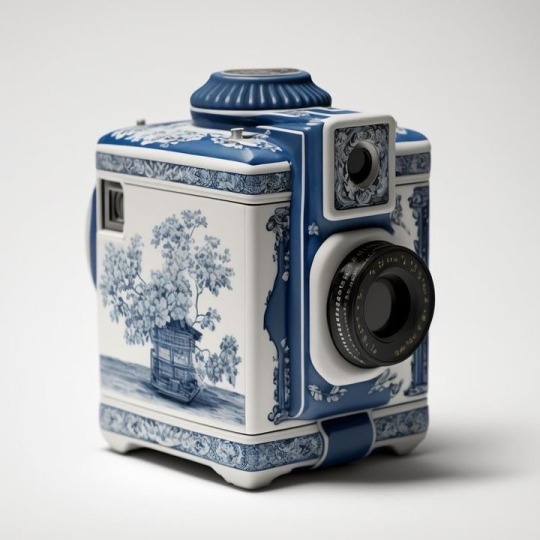

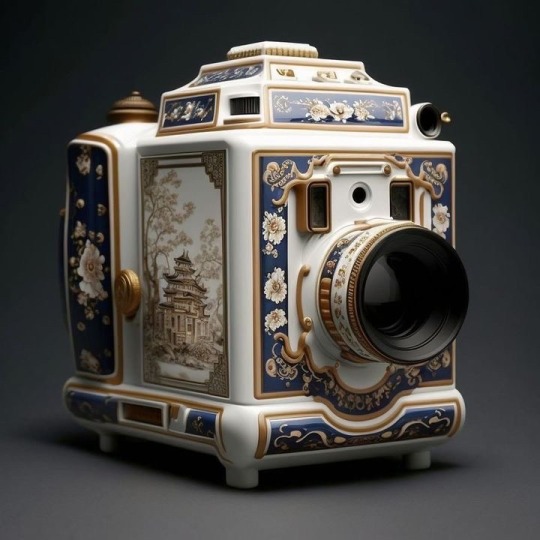

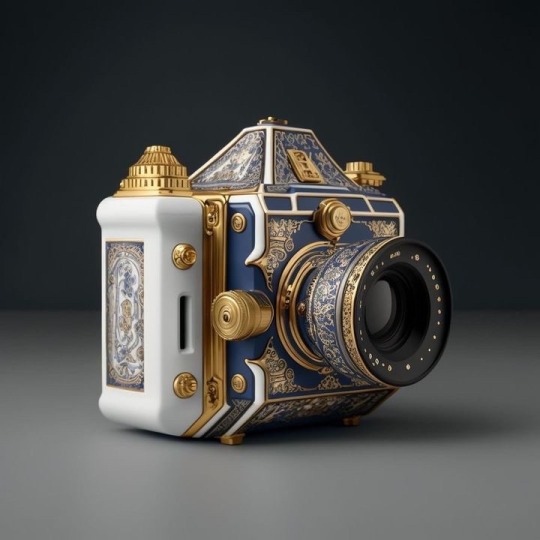
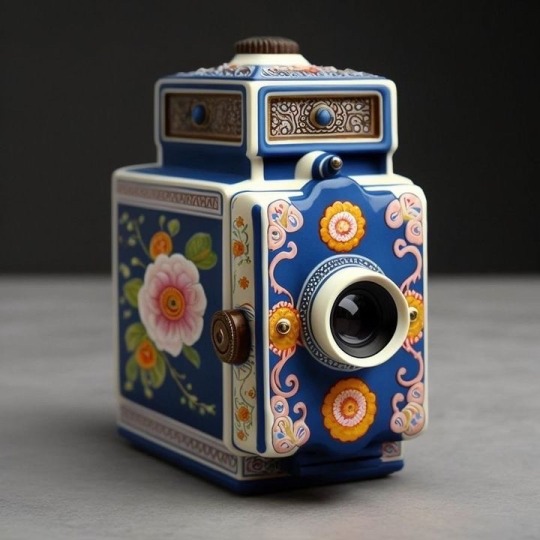



L o v E 🎥
@chiaranonino @mathieustern “Once, The great Chinese Emperor Qianlong became fascinated by the art of photography. He was particularly enamored with the intricacies of the cameras and the beautiful images they produced. The Emperor was so taken with photography that he ordered his finest artisans to create a camera made entirely of porcelain.
The artisans worked tirelessly to create a masterpiece that would please the Emperor. They carefully crafted each piece of the camera by hand, using the finest kaolin clay and the most delicate of designs. When the camera was finished, it was a thing of beauty. The blue and white porcelain shimmered in the light, and the intricate designs and details were truly breathtaking.
The Emperor was delighted with the camera, and he immediately ordered his court photographer to use it to take portraits of him and his court. The resulting images were stunning, and the Emperor was so pleased with the camera that he ordered several more to be made for his court photographers. The porcelain cameras became a symbol of the Emperor's love for photography and his admiration for the artisans who had created them.”
Background ℹ️ ThanX @thelifeofrylee
#midjourney #aiart #fable via @ainterestingaf #mathieustern #chiaranonino for my beloved soul @wetwicksdry 🤎
#3D#3dmodel#octane#octanerender#mdcommunity#noface#3dart#surreal#maxon#cinema4d#c4d#artwork#psychedelic#poster#photoshop#illustration#smoker#graphism#graphic#art#digitalart#otoy#3dillustration#3dartist
#Nowplaying memories by waldeck
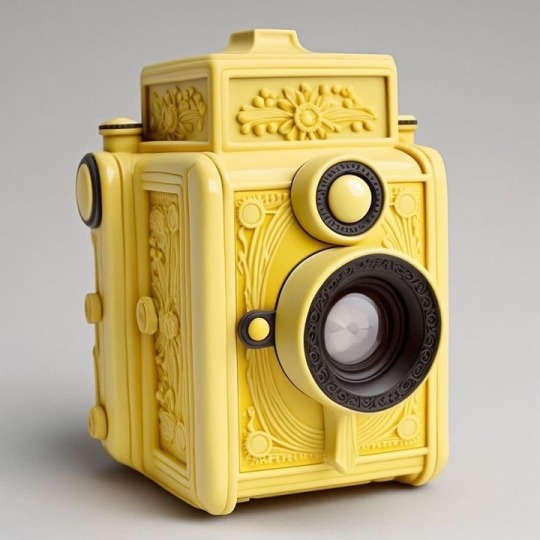
#l o v e#nostalgia#12/2022#3d sculpting#3drender#3d model#3d charms#3d work#3d artist#3d cgi#3d#mathieu stern#chiaranonino#3d render#render#midjourney#newcontemporary#new contemporary art#fucking favorite#music and art#now playing#contemporaryart#Leica#vintage#analog photography#x-heesy#pop art#art post#artist profile#alltime favorite
2K notes
·
View notes
Text
The Qianlong Emperor of China took several tours of the country during his 61-year reign. These were commemorated in massive (over 40 feet long, in one case) painted silk scrolls. These are like Where's Waldo for imperial China, showing all sorts of people going about their daily routines:
The first of these scrolls was Prosperous Suzhou, a masterpiece that shows the city and the countryside around it. We start in the countryside, with villagers busily roofing a house:

Then we come across a mountain path, with tiny figures ascending:

Soon we see the bustling riverfront with shops and an array of boats:
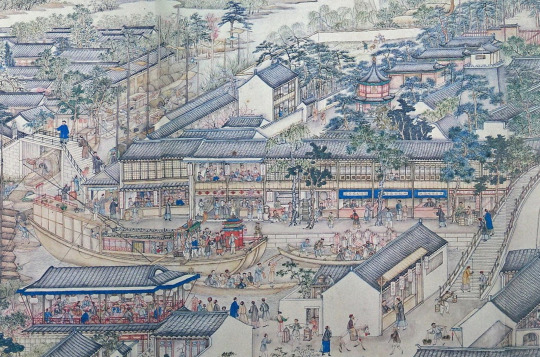
The examination hall, where aspiring scholars study the classics:

And, finally, the city’s fortified port, a sign of imperial strength:
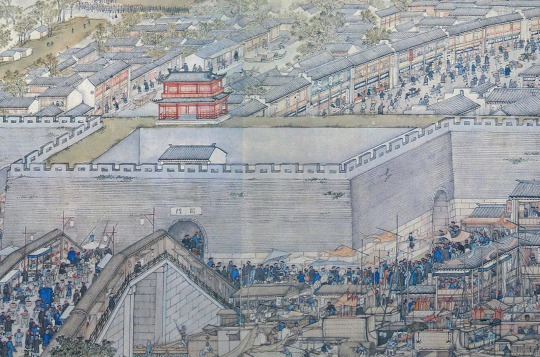
{WHF} {Ko-Fi} {Medium}
292 notes
·
View notes
Text
The names of Qianlong emperor's imperial cats
English added by me :)
733 notes
·
View notes
Text
youtube
0 notes
Text
Note about periodization
I am going to start describing time periods in Chinese history with European historical terms like medieval, Renaissance, early modern, Georgian and Victorian and so on, alongside the standard dynastic terms like Song, Ming and Qing I usually use. So like something about the Ming Dynasty I will tag Ming Dynasty and Renaissance. I already do it sometimes but not consistently. Here’s why.
A common criticism levied against this practice is that periodization is geographically specific and that it’s wrong and eurocentric to refer to, say, late Ming China as Renaissance China. It is a valid criticism, but in my experience the result of not using European periodization is that people default to ‘ancient’ when describing any period in Chinese history before the 20th century, which does conjure up specific images of European antiquity that do not align temporally with the Chinese period in question. I have talked about my issue with ‘ancient China’ before but I want to elaborate. People already consciously or subconsciously consider European periodizations of history to be universal, because of the legacy of colonialism and how eurocentric modern human culture generally is. By not using European historical terms for non-European places, people will simply think those places exist outside of history altogether, or at least exist within an early, primitive stage of European history. It’s a recipe for the denial of coevalness. I think there is a certain dangerous naivete among scholars who believe that if they refrain from using European periodization for non-European places, people will switch to the periodization appropriate for those places in question and challenge eurocentric history writing; in practice I’ve never seen it happen. The general public is not literate enough about history to do these conversions in situ. I have accumulated a fairly large pool of examples just from the number of people spamming ‘ancient China’ in my askbox despite repeatedly specifying the time periods I’m interested in (not antiquity!). If I say ‘Ming China’ instead of ‘Renaissance China’ people will take it as something on the same temporal plane as classical Greece instead of Tudor England. How many people would be surprised if I say that Emperor Qianlong of the Qing was a contemporary of George Washington and Frederick the Great? I’ve seen people talk about him as if he was some tribal leader in the time of Tacitus. European periodization is something I want to embrace ‘under erasure’ so to say, using something strategically for certain advantages while acknowledging its problems. Now there is a history of how the idea of ‘ancient China’ became so entrenched in popular media and I think it goes a bit deeper than just Orientalism, but that’s topic for another post. Right now I’m only concerned with my decision to add European periodization terms.
In order to compensate for the use of eurocentric periodization, I have carried out some experiments in the reverse direction in my daily life, by using Chinese reign years to describe European history. The responses are entertaining. I live in a Georgian tenement in the UK but I like to confuse friends and family by calling it a ‘Jiaqing era flat’. A friend of mine (Chinese) lives in an 1880s flat and she burst out in laughter when I called it ‘Guangxu era’, claiming that it sounded like something from court. But why is it funny? The temporal description is correct, the 1880s were indeed in the Guangxu era. And ‘Guangxu’ shouldn’t invoke royal imagery anymore than ‘Victorian’ (though said friend does indulge in more Qing court dramas than is probably healthy). It is because Chinese (and I’m sure many other non-white peoples) have been trained to believe that our histories are particular and distant, confined to a geographical location, and that they somehow cannot be mapped onto European history, which unfolded parallel to the history of the rest of the world, until we had been colonized. We have been taught that European history is history, but our history is ethnography.
It should also be noted that periodization for European history is not something essentialist and intrinsic either, period terms are created by historians and arbitrarily imposed onto the past to begin with. I was reading a book about medievalism studies and it talked about how the entire concept of the Middle Ages was manufactured in the Renaissance to create a temporal other for Europeans at the time to project undesired traits onto, to distance themselves from a supposedly ‘dark’ past. People living in the European Middle Ages likely did not think of themselves as living in a ‘middle’ age between something and something, so there is absolutely no natural basis for calling the period roughly between the 6th and 16th centuries ‘medieval’. Despite questionable origins, periodization of European history has become more or less standard in history writing throughout the 19th and 20th centuries, whereas around the same time colonial anthropological narratives framed non-European and non-white societies, including China, as existing outside of history altogether. Periodization of European history was geographically specific partially because it was conceived with Europe in mind and Europe only, since any other place may as well be in some primordial time.
Perhaps in the future there will develop global periodizations that consider how interconnected human history is. There probably are already attempts but they’re just not prominent enough to reach me yet. Until that point, I feel absolutely no moral baggage in describing, say, the Song Dynasty as ‘medieval’ because people in 12th century Europe did not think of themselves as ‘medieval’ either. I am the historian, I do whatever I want, basically.
#I was watching an unrelated video about dnd worldbuilding#and out of nowhere someone in the comment section called 1300s chinese people 'ancient asians'#*facepalm*#so I was reminded of this again#rant#colonialism#orientalism#chinese history#historiography
927 notes
·
View notes
Text
Lan Wangji, are you a dog?! MDZS is not ABO! Stop trying to mark Wei Wuxian!
On the meaning of Lan Wangji biting Wei Wuxian in the Xuanwu cave.
Starry_wxluv asked me earlier today over chat to elaborate on the meaning behind Lan Wangji’s biting Wei Wuxian in the arm during the Xuanwu cave as well as this post from Twitter user Zhanying_19
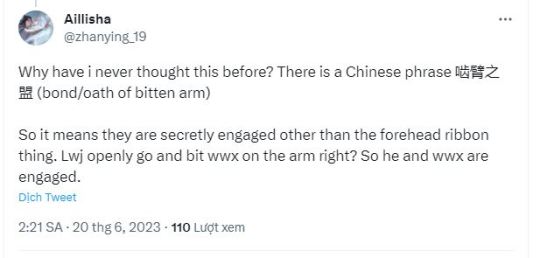
This post is the rewritten form of my answers to her:
啮臂之盟 is an old Chinese idiom that can be translated as ‘Oath of Bitten Arm.’
This saying originates from Sima Qian's Biography of Sun Tzu Wu Qi (circa 87 BC), specifically the legend of Wu Qi killing 30 people who mocked his honor and then made a life oath by gnawing his own arm.
Biting the arm (hard) is symbolic of creating a promise that is written in blood and flesh. When two people do this to each other, it means they promise themselves to each other, by blood and by flesh.
The idiom and the act itself are old, but they are still in used and still hold their symbolism to this day. They are not common by any means, but they are recognized.
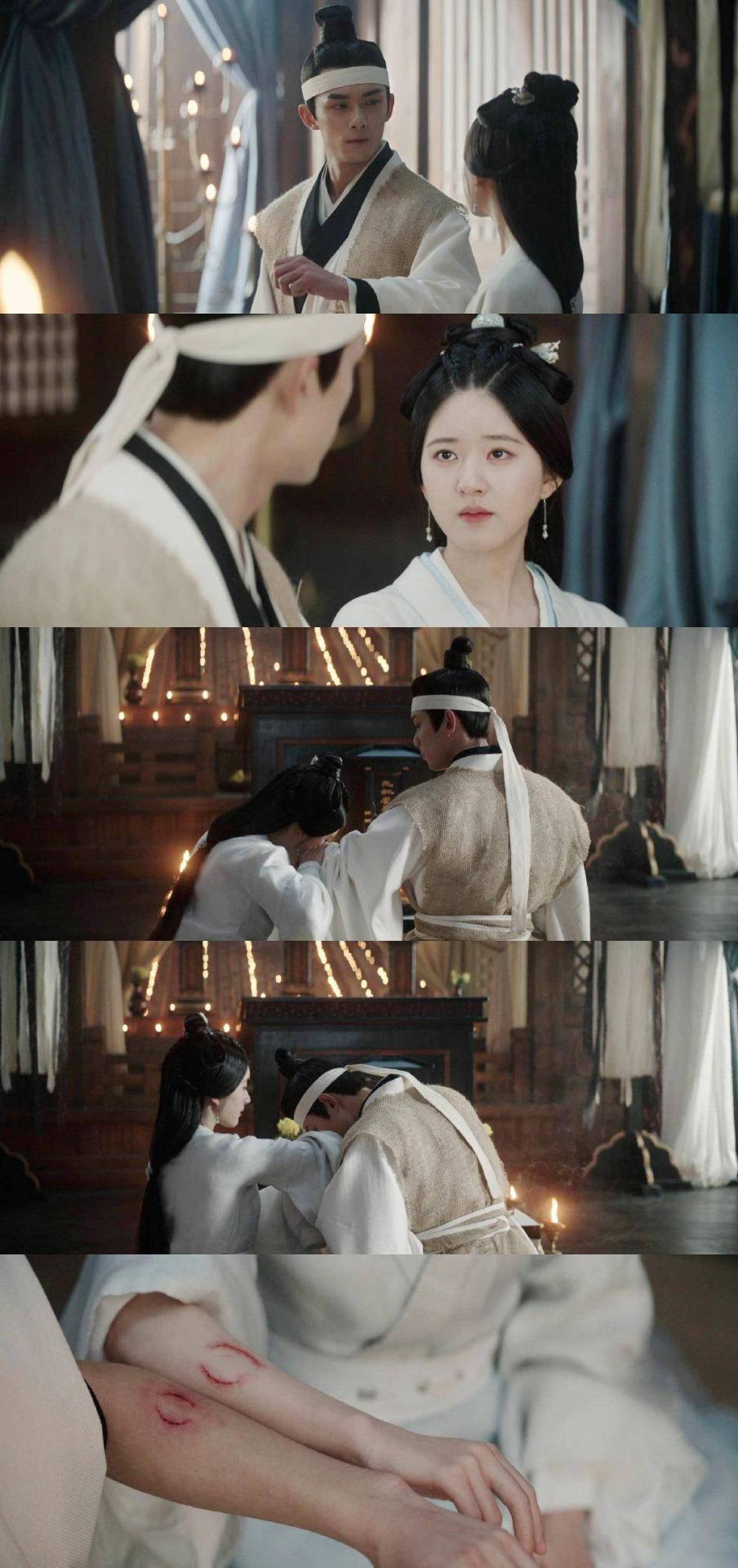
Modern portrayal in Love like the Galaxy, 2022. Cheng Shaoshang promised herself to Ling Buyi and stood by him through war, political struggle, and betrayal, and waited for him to return from exile.
There’s also a legend that Emperor Qianlong’s (18th century) favored concubine once bit him on the arm when he asked what boon she would ask of him. The act is symbolic of her ‘claim’ over him. This legend is of dubious authenticity considering such act could easily result in execution considering the laws of the time. But the weight and romance of the act remains the same. It actually was included in an old 90s TV drama about Qianlong’s life. The name escapes me though. It was a while ago. I remember watching this scene played out when I was a teenager.
Oath of the Bitten Arm is loosely associated with another oath idiom 歃血为盟 (lit. Oath of the shared drinking of blood). Oath of the Drinking Blood does not have the romantic symbolism of Oath of the Bittern Arm though.
So now you know why Lan Wangji... did what he did.
Yes, Teenji was very dramatic. He’s a teenager, so, it’s par for the course really.
173 notes
·
View notes